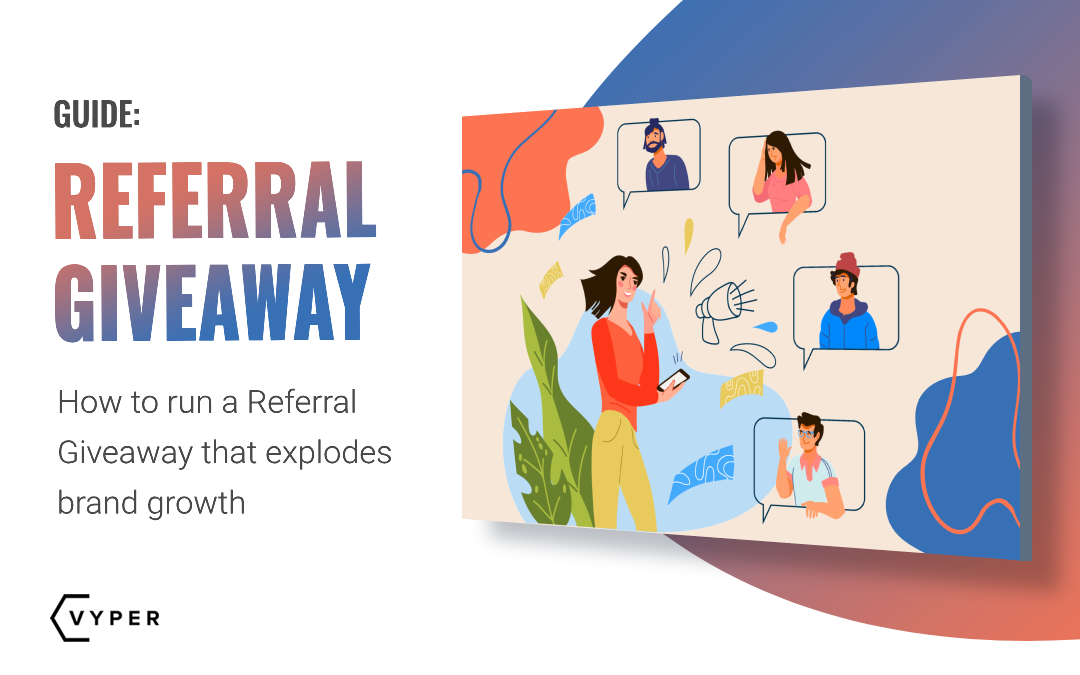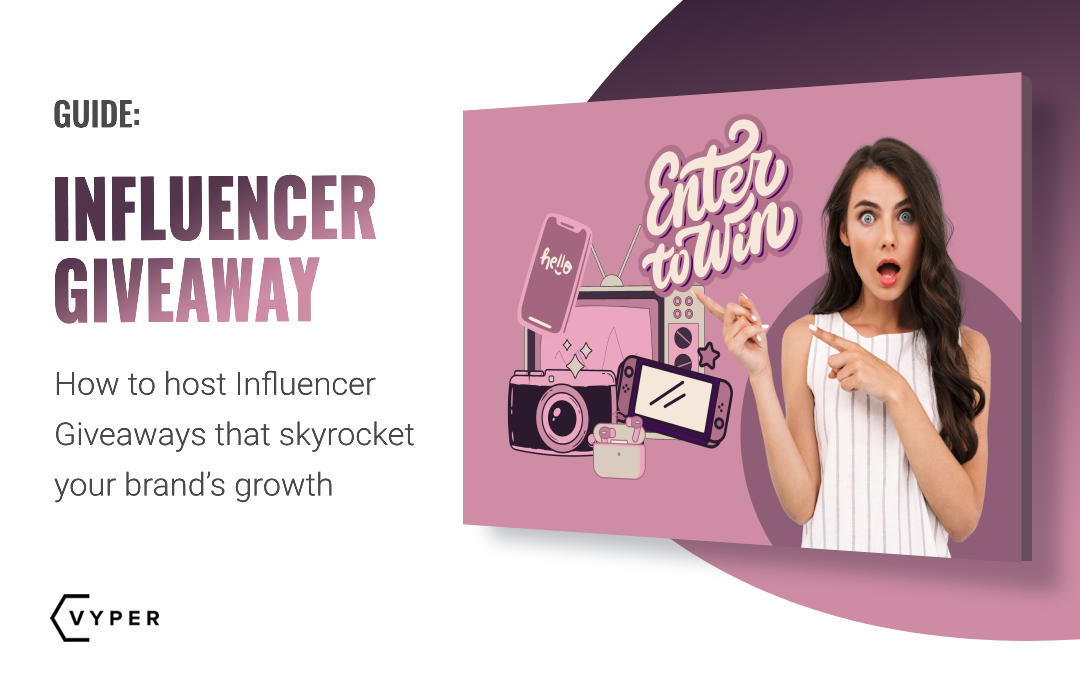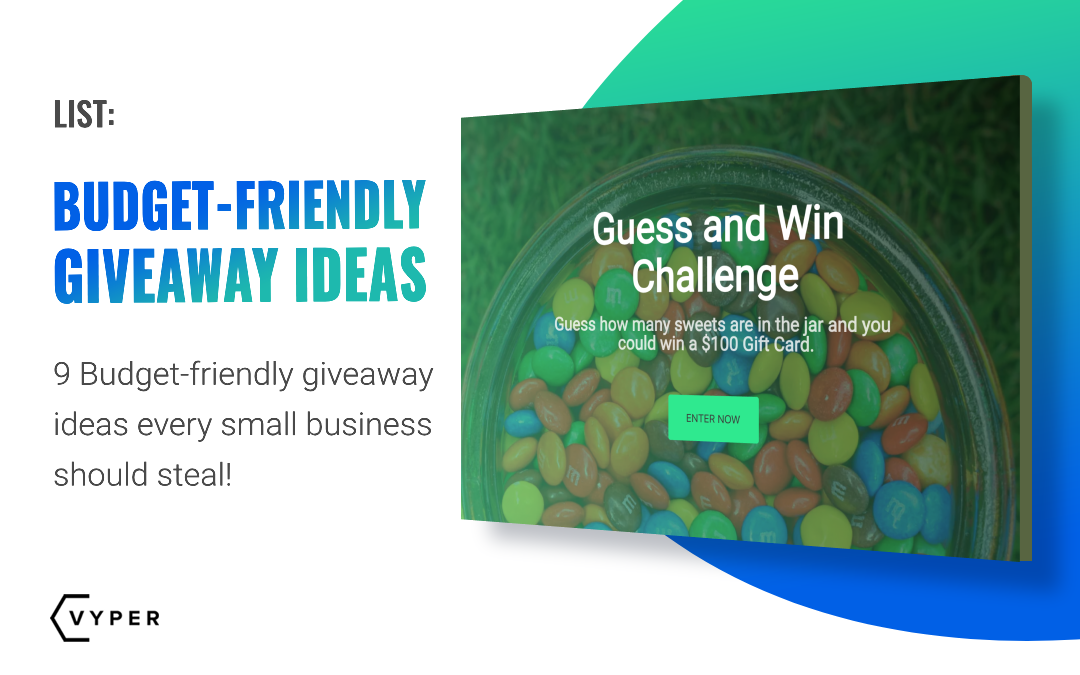Are you creating content for your business but need more inspiration? Or looking to take advantage of a growing trend in digital marketing?
User Generated Content (UGC) might be the answer! UGC is a type of media collaboration between businesses and customers where users can contribute their own creative ideas and executions.
It’s an increasingly popular way for businesses to engage with customers by incentivizing them to generate creative content for brands.
User-generated content provides businesses extra exposure, promotes user engagement, builds relationships with their audience, and significantly benefits small businesses!
This blog post will explore what precisely user-generated content is and discuss how it can benefit your business.

FREE DOWNLOAD: Get all Our Contest & Giveaway Marketing Guides, Checklists, and tutorials that have helped 100’s of brands collect 15k+ emails in under 21 days!
Defining User Generated Content – UGC
User Generated Content (or UGC for short) can be defined as:
“Any form of content created by end-users, typically in the form of stories or reviews, as opposed to content created by brands.”
A typical example is a selfie taken by a customer featuring a brand’s product. Or a picture that features a customer using the brand’s product.

UGC does not have to be images only. UGC can range from simple text messages to complex audio-visual experiences. In other words, content created by a customer that promotes a brand (and its products).
Identifying the Different Types of User-Generated Content
There is a myriad of ways in which users can create content. Here are some examples of UGC:
- Blog posts
- Online video (Funny YouTube/social media videos)
- Audio (podcast, music, audio clips)
- Images (selfies, product pictures, artwork)
Blog Posts
Insightful blog posts are still relevant and incredibly popular. Aspiring writers regularly create blog posts for their websites, social media channels, and dedicated blogging channels like Medium.
A blog post written by a customer using a brand’s product or service is considered UGC. The blog post can be a product review, brand feature, listicle (top 5 wireless buds), etc.

Videos
Online videos featuring a brand’s product that appear on social platforms like Facebook, Instagram, TikTok, or YouTube are considered UGC. People often upload videos of themselves using new products or merchandise they bought.
Video reviews are incredibly popular as they help the consumer make the right choice when buying a product. A video review of a brand’s product can certainly benefit the brand. Video tutorials that feature specific software or hardware are excellent examples of UGC.

Audio
Custom audio produced by a fan or customer is considered UGC. Audio is music, podcasts, and audio clips. In addition, aspiring music producers can create songs or remixes using a particular brand’s musical instrument.
On the other hand, podcasts regularly promote products and brands on each episode. Audio clips can be quick testimonials, reviews, and consumer advice regarding a particular brand.

You can use a service like Headliner to create short videos from your audio clips. These videos feature an audiogram graphic that moves with the sound from the audio clip. There are also various podcast promotional channels you can use to help promote your podcasts.
Images
Images are the most common and popular form of UGC. Selfies, pictures of products or brand stores, and artwork related to a particular brand are considered UGC.
Brands often host UGC contests on social media to boost their user-generated content. Some examples are Selfie Contests, Online Art Competitions, and Talent Contests.


Examples of User-Generated Content
Any content created by fans, customers, or community members can technically be user-generated. However, not all content is created equal, with some UGC proving to be more popular online than others.
Here are a few examples of user-generated content and how they benefit the brands featured in the content:
Go Pro – A Worthy UGC Tool
Instagram user @pal_peti snapped up a picture of the Burj Khalifa in Dubai using his GoPro Hero 11. He posted the image on Instagram and tagged the official @GoPro account.

This particular user-generated content may not feature the brand or its product. However, the image was taken with a GoPro camera. It’s an incredible picture, which is a testament to how good GoPro cameras are.
Key Takeaways:
- Brands with products that are content creation tools (cameras, software, instruments, etc.) should certainly host UGC campaigns or encourage users to create UGC.
- A UGC campaign can almost instantly deliver tons of content on a platform like Instagram because of the number of users involved. This is an excellent opportunity to build custom hashtags that align with your brand.
Native Instruments – A Groovy Kind of UGC
Native Instruments makes excellent music production hardware and software. You can certainly cook up some incredible music with their Maschine hardware/software package. To promote their product, NI hosted a UGC campaign in the form of a “Music Producer Challenge.”

Users had to produce a song using NI Maschine hardware to enter the challenge. Winners received fantastic prizes from Native Instruments.
This campaign encouraged users to upload UGC (music) online that showcased the power of music production hardware. Entrants also created additional UGC through screenshots of the song being produced.

Key Takeaways:
- A campaign that encourages users to use the brand’s product to create UGC.
- More than one type of UGC came from this campaign. Music and images. Producing a variety of UGC from a single campaign is an excellent idea. You could host a campaign that generates pictures, videos, artwork, graphic design, and more.
Casetify – A Simple But Epic Unboxing
Isa does Tech is a YouTuber that reviews products like smartphones, cameras, and other accessories/gadgets on her channel. In addition, she has a dedicated Instagram account for unboxing the products she reviews on YouTube.

Isa does also creates mini reviews of products that don’t make it to her YouTube. She clearly displays every product as she demonstrates its use cases. These videos do a great job of promoting the product and the brand.
Key Takeaways:
- Tech influencers are professional content creators that can easily produce high-quality UGC for your brand.
- Product reviews on social media are an essential form of user-generated content.
Examples of Successful User-Generated Content Campaigns
Analyzing successful UGC campaigns is a great way to learn how to create effective user-generated content. There are many examples of well-executed UGC campaigns from large brands, small companies, and organizations of all sizes.
Here are a few examples of those UGC Campaigns:
Coca-Cola’s #ShareACoke
Coca-Cola replaced its logo with popular first names on its bottles. People were encouraged to share pics on their socials of themselves drinking from a Coke bottle with their name on it.
The campaign generated 500k photos and a 2% sales increase for Coca-Cola.
#ShareACoke is an excellent example of how to use UGC to increase sales. First, create custom products for fans to use in their selfies. Then, eager customers will buy those products to participate.
However, this strategy makes more sense for cheaper, perishable products.

Airbnb’s #OneLessStranger
Airbnb encouraged people to do something kind for a stranger. Users would then share their stories on social media with the hashtag #OneLessStranger.
The campaign generated 16k mentions on Twitter, resulting in a 25% increase in positive sentiment towards AirBnB.
#OneLessStranger is an excellent example of how a brand without physical products can still benefit from a UGC campaign. Likewise, getting people to participate in kind gestures (for your brand) can make for great UGC.

Lay’s Do Us A Flavor Contest
Lay’s customers had to submit their unique chip flavor ideas in an online UGC contest. Winners of the contest received cash prizes and had their flavors produced and sold in stores.
The campaign generated over 3.8 million submissions, resulting in a 12% increase in sales.
Lay’s Do Us A Flavor is an excellent example of a UGC contest that can boost website traffic, social media engagement, and sales. Allowing customers the opportunity to provide input into your product development can be a powerful strategy when done right.

The Benefits of Incorporating UGC into Your Strategy
Incorporating user-generated content (UGC) into your overall business strategy can yield tremendous rewards. With UGC, you benefit from additional content that is authentic and engaging on a personal level, allowing your customers to become advocates for your brand.
Here are more benefits of UGC:
- UGC promotes an increase in engagement on social media. Especially if you ask users to tag your brand in their pictures.
- Brand loyalty is essential with UGC. People seen using your products will imply that they are indeed loyal to your brand. This will further promote brand loyalty with others.
- Your brand gets free content created by loyal fans/customers. The content has the potential to be excellent and may even feature a unique perspective because it is made outside of the company.
- UGC on social media can help build a brand’s online presence. This is achieved through hashtags, users tagging other users, users tagging your brand, and engagement through comments, likes, and shares.
- UGC can undoubtedly boost website traffic. If you request people to upload their content to your site. A UGC contest is also an excellent way to motivate people to visit your site (“Visit our site to enter the contest”).


Best Practices for Creating UGC-Friendly Campaigns
Creating successful user-generated content campaigns is no small feat. While the potential rewards can be huge, there are a few key aspects to consider when designing a UGC-friendly campaign:
- Set clear goals for your UGC campaign. Want traffic to your store? Then ask users to snap selfies inside your store.
- Incentivize participants. Give customers a reason to create content for your brand. You could offer discounts, exclusive access, or host a UGC contest.
- Ensure your audience has crucial conversations with other community members; this could be highlighting user comments on Facebook posts or interviewing influencers for their stories on Instagram.

Are you looking to host a UGC Contest and need to know more about the rules behind giveaways and contests? We have an entire guide dedicated just to the laws around giveaways and contests.
User-Generated Content Q&A
Any piece of online content created by a brand’s customer, fan, or community member. UGC can be anything from images, videos, blog posts, audio clips, and more.
You can simply ask your customers to participate in creating content for your brand. This can be done in a fun way through art, selfies, making funny videos, music production, and more. You can further incentivize these activities by offering the best submissions prizes with a UGC contest.
Other ways to incentivize UGC are by offering product discounts, gift cards, honorable mentions on social media, and exclusive access to VIP products/services/tools.
Yes! User-generated content featuring a brand and its product is a powerful testimonial that can entice other users to purchase it. Any business can certainly benefit from this.
You should, however, work within your limitations and not expect too much from your customers. For example, you cannot expect customers to purchase a car just to create content for your brand. Instead, it’s more reasonable to ask people to purchase a cup of coffee to use in their content creation.
TL;DR: What Is User Generated Content
User-generated content (UGC) is a powerful tool to increase brand awareness, engage customers and expand your digital presence. UGC can create more meaningful connections with customers and build loyalty while increasing website traffic and improving SEO.
By following best practices of providing guidelines but allowing flexibility – you can create legitimate collaborations through user-generated content campaigns that are both effective and creative.
Whether you plan a hashtag campaign, collaborate with influencers, or use contests – incorporating user-generated content into your strategy can deliver an outstanding ROI.
And now that you’ve reviewed the benefits, opportunities, pitfalls, and examples of successful UGC campaigns – are you ready to make the jump? Do you think your brand can benefit from user-generated content? If so, there’s no better time than today to explore this valuable marketing opportunity.
Jack Paxton is the co-founder of VYPER, a marketing tool that helps brands build email lists, social followings, and revenue using viral giveaways, referral, and reward programs. After millions of dollars spent testing different marketing strategies at his marketing agency. He then also co-founded Hyax a fast, conversion & design-focused course and funnel builder for creators.




Thank you
Appreciating your content to enrich our digital lives is always nice and has greatly helped me.
Its a pleasure! Thank you for all of your kind words. Please keep reading as we have more new content coming soon!
Yes of course AI content is great, especially if you are managing multiple businesses and do not have time to create the amount of content you wish to deliver to your audience. AI can give you the content boost you and your business needs. However, whether its AI or personal content creation, the content has to exceptional. People must want to read your blog posts or watch your videos. If the AI content lacks in quality, then it isn’t worth it. You rather hire a proper content creator that will supply your company with the kind of quality that will attract new customers.
Thank you
thank you nyc content
very good blog, keep writting like this well done
very good blog, keep writting like this
What Is User-Generated Content, and Why It’s Essential for All Brands? this is a very informative topic. most of the writers use AI content, what’s your thought about it? it is good or not?
Wow, this blog post on “Best Practices for Creating UGC-Friendly Campaigns” is incredibly insightful and informative! The author has done an excellent job highlighting the key aspects to consider when designing user-generated content (UGC) campaigns. The clarity in setting goals for UGC campaigns is crucial, and the suggestions to incentivize participants with discounts, exclusive access, or hosting a UGC contest are brilliant ideas to engage customers and create authentic content.
The Q&A section is particularly helpful, addressing common questions about UGC and providing practical ways to encourage customers to create content for brands. The reminder to work within limitations and not expect too much from customers is a valuable tip, ensuring campaigns remain realistic and achievable.
Additionally, the free “Contest & Giveaway Viral Growth Guide” is a fantastic resource for anyone looking to dive deeper into UGC strategies. The TL;DR section nicely sums up the power of UGC in boosting brand awareness, customer engagement, and SEO while fostering meaningful connections with the audience.
Overall, this blog has provided a well-rounded and comprehensive guide to harnessing the potential of UGC campaigns. It certainly encourages brands to explore this valuable marketing opportunity and take advantage of user-generated content to elevate their digital presence. Great job on this insightful piece!
thanks for sharing with us keep sharing Amazing blog